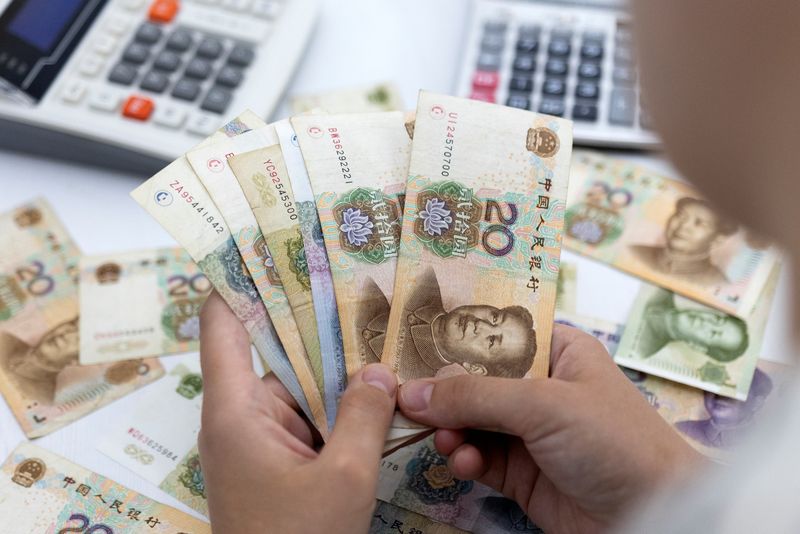NEW YORK (Reuters) - Emerging markets attracted foreign portfolio inflows for a seventh straight month in May thanks to investors pouring money into bonds, but persistently high U.S. interest rates are dimming the outlook, a report from a banking trade group showed.
The Institute of International Finance (IIF) said net non-resident portfolio flows into emerging markets came in at $5.5 billion in May compared to a revised $8.2 billion inflow in April, IIF data show.
The gains came as inflows into fixed income, at $11.5 billion, more than offset outflows of $6.0 billion from stocks -with both China and ex-China suffering.
Notwithstanding the seven month-long monthly streak of inflows, "we see a diminishing trend on the level of flows, mainly attributed to the perspective of a 'higher for longer' (Federal Reserve rate) and greater volatility on markets," according to IIF economist Jonathan Fortun.
U.S. inflation has remained sticky, but the U.S. economy also grew more slowly in the first quarter than previously estimated, rekindling expectations for two 25-basis point rate cuts from the Fed before the year-end. Yet a Reuters poll also showed over one-in-four participants still think the Fed could opt for only one cut this year - or none at all.
June didn't start well for some of the largest emerging markets as India, Mexico and South Africa saw spikes in volatility and sell-offs across various asset classes as unexpected electoral results sent markets reeling.
Chinese equities lost $0.7 billion in May, though there might be a change on the cards, the report said.
"We see China’s stocks gaining momentum, especially if stimulus policies meet market expectations," said Fortun.
Looking ahead to overall emerging market bond sales, narrowing spreads and off-shore demand could be driving fresh issuance of debt to record levels, Fortun said.

"Market appetite for local currency debt across the EM complex is still supporting the overall figure."
Regionally, Emerging Europe portfolios led inflows with some $6.2 billion last month, while Latin America funneled in $1.6 billion. Africa and the Middle East, and emerging Asia, saw outflows close to a billion dollars each.